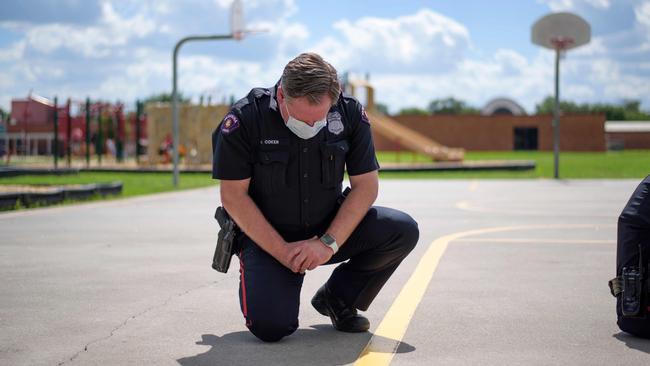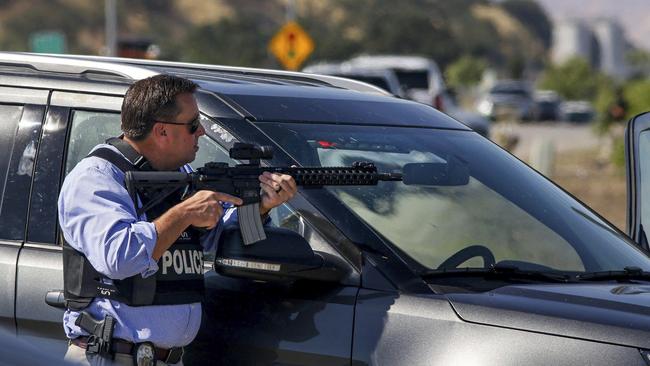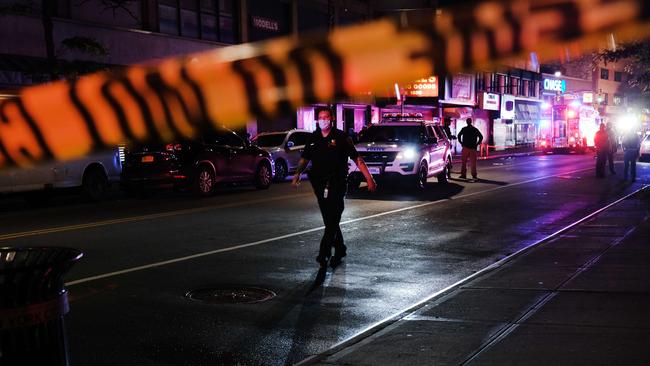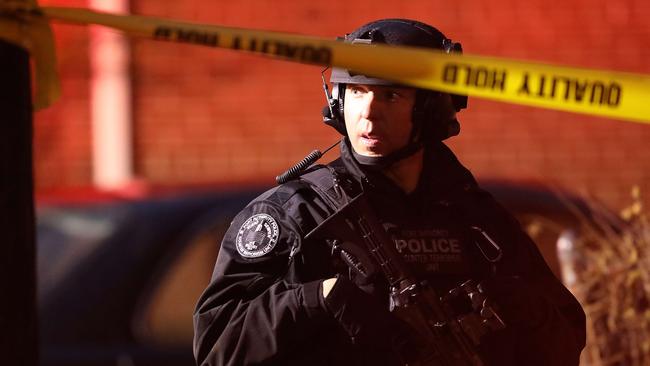Black Lives Matter: What the data really says about US police

I have led two starkly different lives — that of a Southern black boy who grew up without a mother and knows what it’s like to swallow the bitter pill of police brutality, and that of an economics nerd who believes in the power of data to inform effective policy.
In 2015, after watching Walter Scott get gunned down, on video, by a North Charleston, South Carolina, police officer, I set out on a mission to quantify racial differences in police use of force. To my dismay, this work has been widely misrepresented and misused by people on both sides of the ideological aisle. It has been wrongly cited as evidence that there is no racism in policing, that football players have no right to kneel during the national anthem, and that the police should shoot black people more often. Here’s what my work does say:
● There are large racial differences in police use of nonlethal force. My research team analysed nearly five million police encounters from New York City. We found that when police reported the incidents, they were 53 per cent more likely to use physical force on a black civilian than a white one. In a separate, nationally representative dataset asking civilians about their experiences with police, we found the use of physical force on blacks to be 350 per cent as likely. This is true of every level of nonlethal force, from officers putting their hands on civilians to striking them with batons. We controlled for every variable available in myriad ways. That reduced the racial disparities by 66 per cent, but blacks were still significantly more likely to endure police force.

● Compliance by civilians doesn’t eliminate racial differences in police use of force. Black civilians who were recorded as compliant by police were 21 per cent more likely to suffer police aggression than compliant whites. We also found that the benefits of compliance differed significantly by race. This was perhaps our most upsetting result, for two reasons: The inequity despite compliance clashed with the notion that the difference in police treatment of blacks and whites was a rational response to danger. And it complicates what we tell our kids: Compliance does make you less likely to endure a beat-down — but the benefit is larger if you are white.
People who invoke our work to argue that systemic police racism is a myth conveniently ignore these statistics. Racism may explain the findings, but the statistical evidence doesn’t prove it. As economists, we don’t get to label unexplained racial disparities “racism.”
● We didn’t find racial differences in officer-involved shootings. Our data come from localities in California, Colorado, Florida, Texas and Washington state and contain accounts of 1399 police shootings at civilians between 2000 and 2015. In addition, from Houston only in those same years, we had reports describing situations in which gunfire might have been justified by department guidelines but the cops didn’t shoot. This is a key piece of data that popular online databases don’t include.
No matter how we analysed the data, we found no racial differences in shootings overall, in any city in particular, or in any subset of the data. I have grappled with these results for years as I witnessed videos of unmistakeable police brutality against black men. How can the data tell a story so different from what we see with our eyes?
Our analysis tells us what happens on average. It isn’t average when a police officer casually kneels on someone’s neck for 8 minutes and 46 seconds. Are there racial differences in the most extreme forms of police violence? The Southern boy in me says yes; the economist says we don’t know.
Several scholars have rightly pointed out that these data all begin with an interaction, and suggested that racist policing manifests itself in more interactions between blacks and the police. The impact of this hypothesis in our shootings data seems minimal. The results on police shootings are statistically the same across all call types — ranging from officer-initiated contact with a suspicious person (where racism in whom to police is likely paramount) to a 911 call of a homicide in progress (where interaction with the potential suspect is more likely independent of race).

Are the data nationally representative? We don’t know. But at least two other studies, both published in 2016 — by Phillip Atiba Goff et al. and Ted R. Miller et al. — have since found the same using different data. Moreover, when we use our data to calculate the descriptive statistics used in popular databases such as the Washington Post’s, we find a higher percentage of black civilians among unarmed men killed by the police than they do. Those statistics, however, cannot address the fundamental question: When a shooting might be justified by department standards, are police more likely actually to shoot if the civilian is black? Only our data can answer this question, because it contains information on situations in which a shooting might meet departmental standards but didn’t happen. The answer appears to be no.
● Investigating police departments can have unintended consequences. Following the brutal beating of Rodney King by Los Angeles police officers in 1991, the U.S. Attorney-General was given the power to investigate and litigate cases involving a “pattern or practice” of conduct by law-enforcement officers that violates the Constitution or federal rights. Many argue that the answer to police reform in America must include more of these types of investigations.
We conducted the first empirical examination of pattern-or-practice investigations. We found that investigations not preceded by viral incidents of deadly force, on average, reduced homicides and total felony crime. But for the five investigations that were preceded by a viral incident of deadly force, there was a stark increase in crime — 893 more homicides and 33,472 more felonies than would have been expected with no investigation. The increases in crime coincide with an abrupt change in the quantity of policing activity. In Chicago alone after the killing of Laquan McDonald, the number of police-civilian interactions decreased by 90 per cent in the month the investigation was announced.
Importantly, in the eight cities that had a viral incident but no investigation, there was no subsequent increase in crime. Investigations are crucial, but we need to find ways of holding police accountable without sacrificing more black lives.
For all of us who are frustrated about decades of racial disparities that have gone unchecked, this is our Gettysburg. Yet we do ourselves a disservice in the battle against racial inequality if we don’t adhere to rigorous standards of evidence, if we cherry-pick data based on our preconceptions. The truth is enough to justify sweeping reform.
The Wall Street Journal
More Coverage






